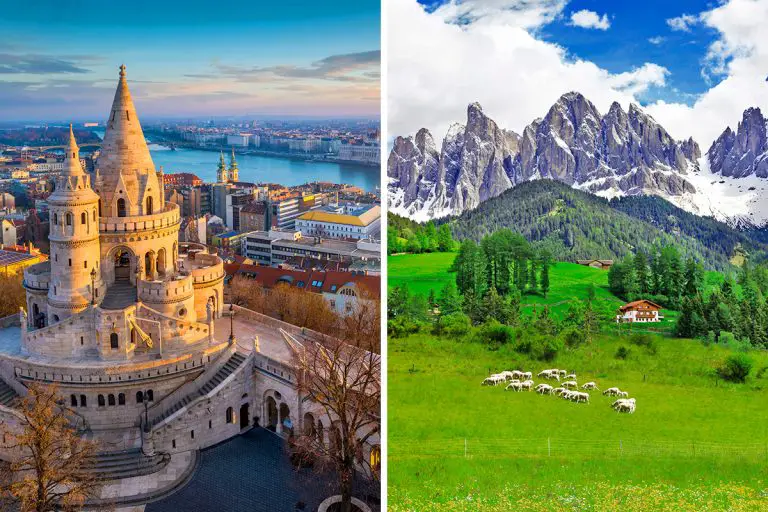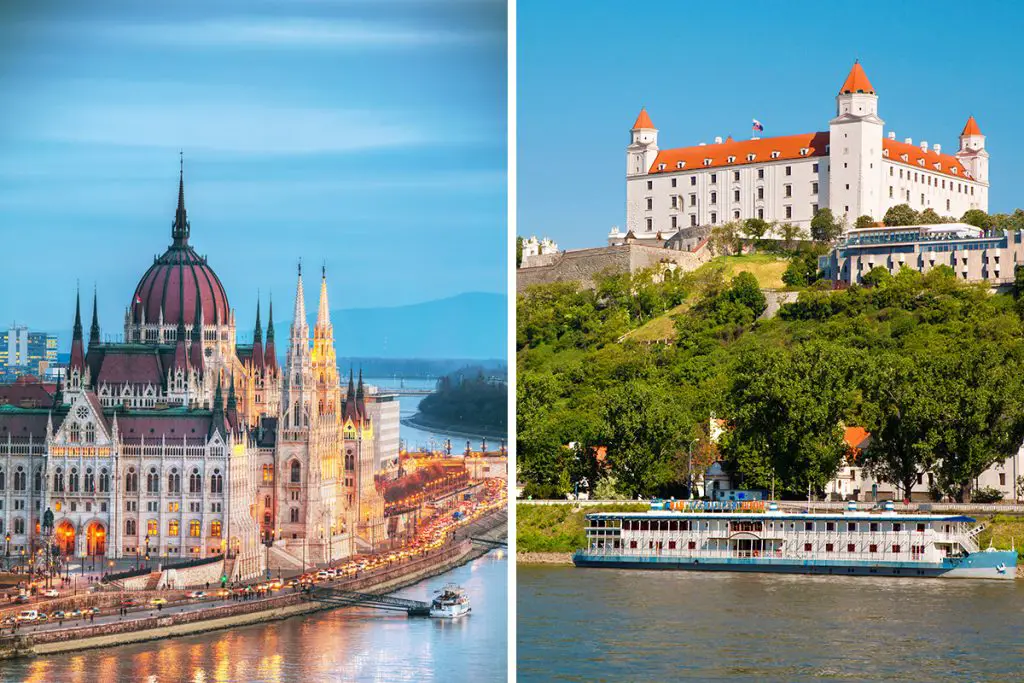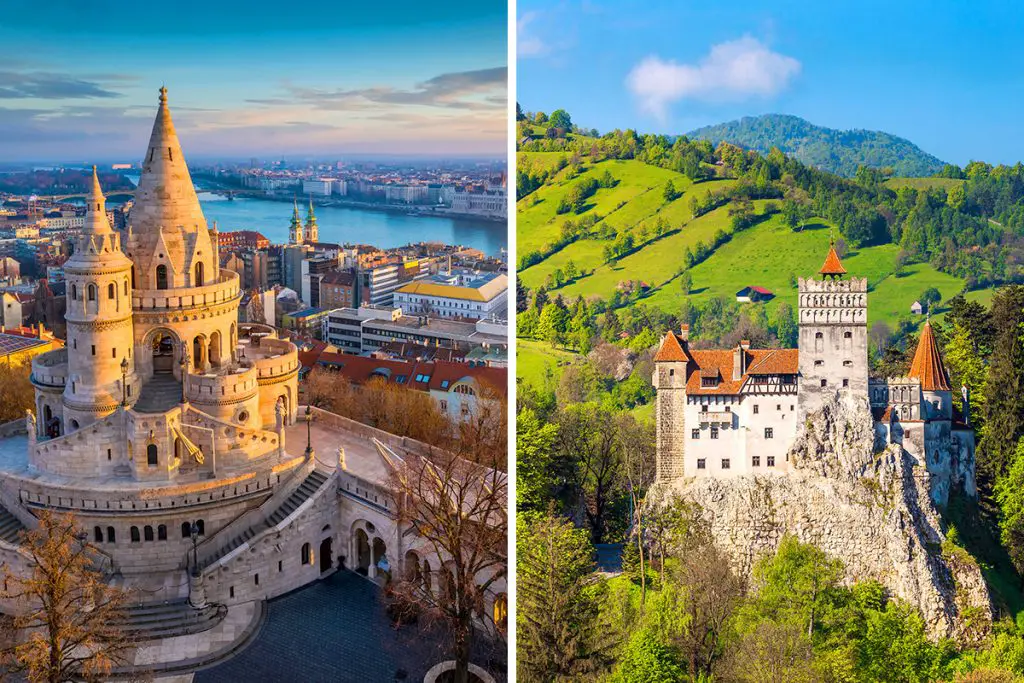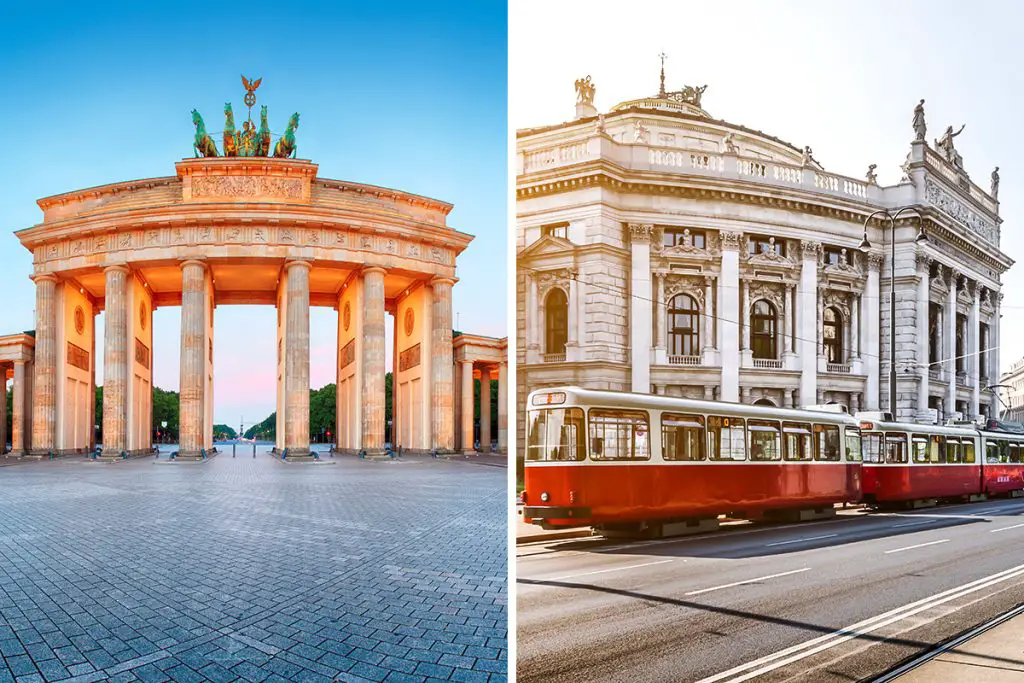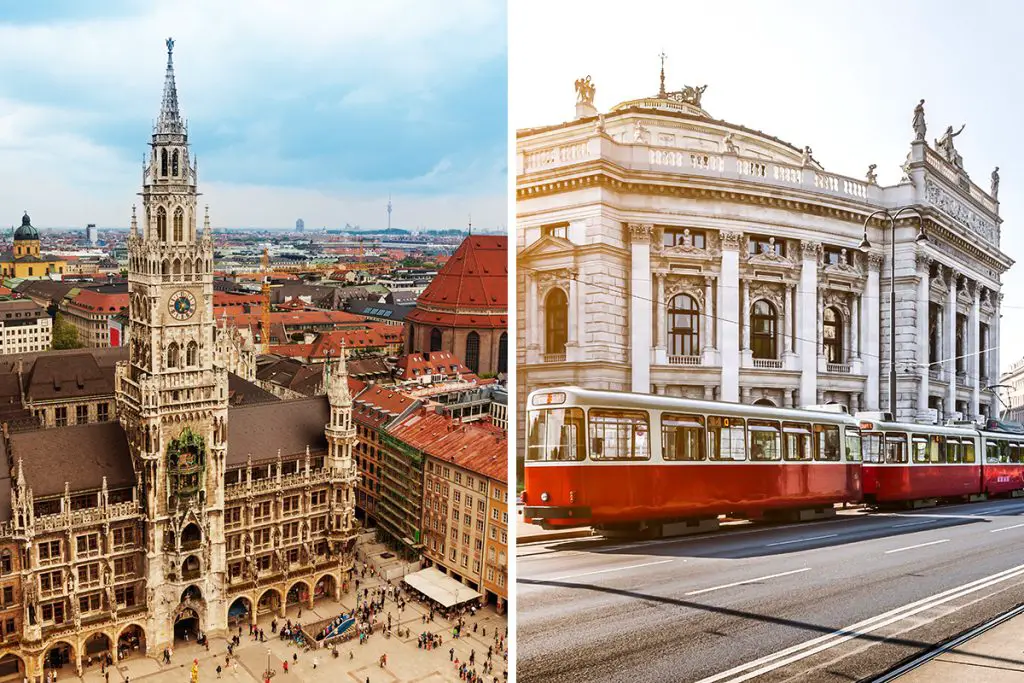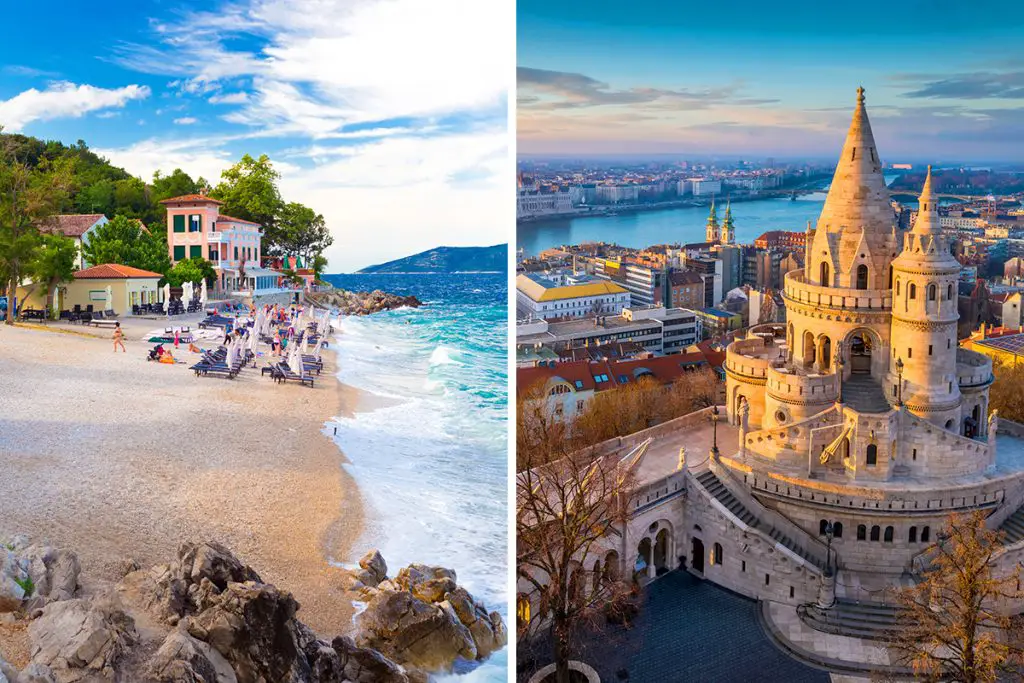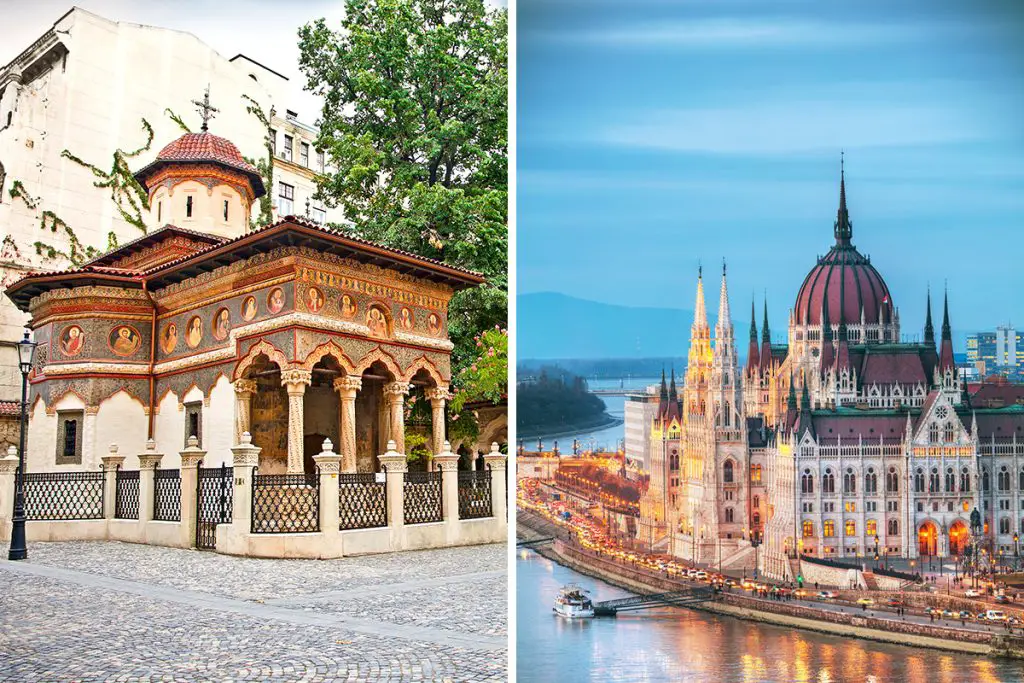These two European gems have something for everyone, whether you’re a history buff, a food lover, or an outdoor enthusiast. Curious to know more about Hungary and Austria and how they measure up against each other? Keep reading to explore the wonders of these two captivating destinations and find the perfect fit for your next adventure.
History & Culture
Hungary and Austria each have rich histories and unique cultures. In this section, you’ll see how they compare.
In Hungary, history comes alive. This country has seen many rulers, from Romans to Turks. As a result, you’ll find diverse influences in its architecture and traditions. Hungarian folk art and music are also important parts of the culture, adding color and joy to your visit.
Austria, on the other hand, has a royal past. The Habsburg Empire left behind grand palaces and elegant buildings. Classical music is huge in Austria, with famous composers like Mozart and Beethoven calling it home. The arts thrive here, giving you a chance to explore galleries and museums.
Both countries have vibrant histories and cultures. If you’re a fan of diverse influences and folk art, Hungary might be the place for you. But if classical music and regal architecture are more your style, Austria could be your perfect destination.
Attractions & Activities
Hungary and Austria both offer amazing attractions and activities for travelers. In this section, you’ll discover what makes each country stand out.
In Hungary, you can explore historic landmarks like Buda Castle and Fisherman’s Bastion. These spots provide stunning views of Budapest, the capital city. For a relaxing experience, head to one of Hungary’s famous thermal baths, like Gellért or Széchenyi. These baths are a perfect way to unwind after a day of sightseeing.
Austria boasts a mix of natural and man-made wonders. You can visit the magnificent Schönbrunn Palace in Vienna or admire the baroque beauty of Salzburg’s old town. If you love nature, the Austrian Alps offer hiking, skiing, and breathtaking views. The picturesque village of Hallstatt, nestled between mountains and a lake, is another must-see attraction.
Both Hungary and Austria have plenty to see and do. If you enjoy historic sites and relaxing thermal baths, Hungary may be the perfect fit. But if you prefer a blend of natural beauty and architectural marvels, Austria could be your ideal destination.
Eating, Drinking & Nightlife
The culinary scene and nightlife in Hungary and Austria are quite different. In this section, you’ll learn what each country has to offer in terms of food, drinks, and evening entertainment.
Hungarian cuisine is rich and flavorful. You’ll find dishes like goulash, a hearty stew, and chimney cake, a sweet treat. Traditional Hungarian meals are often seasoned with paprika, giving them a unique taste. There are plenty of restaurants and cafes where you can sample these delicious foods.
Austrian food, on the other hand, leans towards savory pastries and comforting dishes. Wiener schnitzel, a breaded and fried veal cutlet, is a must-try. Don’t miss out on their famous apple strudel for dessert. Austrian cuisine offers an array of mouthwatering options to satisfy your cravings.
When it comes to drinking, Hungary is famous for its wines. Tokaji, a sweet dessert wine, is one of the most well-known varieties. You’ll also find excellent reds and whites produced in the country’s wine regions.
In Austria, beer is king. The country has a rich brewing tradition, and you can sample various local brews at beer gardens and pubs. Austrian wines, particularly from the Wachau region, are also worth trying.
Nightlife in Hungary is lively, with Budapest offering a range of bars, clubs, and unique ruin pubs. These converted spaces offer a one-of-a-kind experience, perfect for socializing and enjoying a night out.
Austrian nightlife, especially in Vienna, is more refined. You might attend a classical music concert or enjoy a night at the opera. There are also bars and clubs, but the atmosphere tends to be more relaxed compared to Hungary’s energetic scene.
In conclusion, if you’re seeking flavorful food and lively nightlife, Hungary might be the perfect choice. But if you prefer comforting dishes, excellent beer, and a more relaxed evening atmosphere, Austria could be your ideal destination.
Shopping
Shopping is an exciting part of any trip, and both Hungary and Austria offer unique experiences. In this section, you’ll learn about shopping opportunities in each country.
In Hungary, Budapest is the shopping hub. You can visit the Great Market Hall, a historic venue with local produce, crafts, and souvenirs. There are also modern shopping malls, like WestEnd City Center, where you’ll find popular international brands.
Austria, particularly Vienna, is known for its elegant shopping streets. The Graben and Kohlmarkt are famous for luxury boutiques and designer stores. If you’re looking for traditional Austrian items, such as hand-painted porcelain or delicate crystal, you can find them in specialty shops throughout the city.
Both Hungary and Austria offer great shopping experiences. If you’re after local crafts and a bustling market atmosphere, Hungary might be your perfect destination. But if high-end boutiques and exclusive designer goods appeal to you, Austria could be the ideal choice.
Accommodation
Finding the perfect place to stay is important when traveling. In this section, you’ll see how accommodation options compare in Hungary and Austria.
In Hungary, you can find a wide range of accommodations, from budget-friendly hostels to luxurious hotels. Budapest offers many charming boutique hotels and guesthouses, allowing you to experience the city’s historic charm while enjoying modern amenities.
Austria also has a variety of lodging options, including cozy inns and upscale hotels. Cities like Vienna and Salzburg feature elegant hotels with impressive architecture and top-notch service. You can also find unique accommodations, such as castle hotels, for a truly memorable stay.
Both Hungary and Austria offer excellent accommodation choices to suit your needs and budget. Whether you prefer budget-friendly options or luxurious stays, you’re sure to find the perfect place in either country.
Family-Friendliness & Children’s Activities
Traveling with family can be a fantastic experience, and both Hungary and Austria have plenty to offer. In this section, you’ll learn about family-friendly activities in each country.
In Hungary, Budapest is a great place for families. The city has several parks, like the beautiful Margaret Island, where kids can play and explore. Families can also visit the Budapest Zoo or the Palace of Wonders, an interactive science museum that will spark children’s curiosity.
Austria is also a family-friendly destination, with a variety of attractions and activities for all ages. You can visit the Schönbrunn Zoo in Vienna, one of the oldest zoos in the world, or explore the Haus der Natur, a natural history museum in Salzburg. For outdoor fun, the Austrian Alps provide opportunities for skiing and hiking, perfect for family adventures.
Both Hungary and Austria cater to families with engaging activities and attractions. If you’re looking for city-based entertainment and interactive museums, Hungary might be the ideal destination. However, if outdoor activities and a mix of cultural experiences appeal to you, Austria could be the perfect choice for your family vacation.
Getting There & Getting Around
Traveling to and navigating through a new country can be a crucial part of your trip. In this section, you’ll learn about getting to and around Hungary and Austria.
To reach Hungary, you’ll likely fly into Budapest Ferenc Liszt International Airport. It’s about 10 miles (16 kilometers) from the city center. Several major airlines operate flights to and from Budapest, connecting it with major cities worldwide.
Austria’s main international gateway is Vienna International Airport, located approximately 11 miles (18 kilometers) from Vienna’s city center. With numerous airlines serving the airport, you can easily find flights from major cities around the globe.
Once you’ve arrived in Hungary, public transportation is a convenient way to explore the country. Budapest has an extensive network of buses, trams, and a metro system. Taxis and ridesharing services are also available. For longer distances, trains can take you to other cities and towns.
In Austria, you’ll find an efficient public transportation system, including trains, buses, and trams. Vienna’s metro system is reliable and easy to use. For travel outside the cities, trains connect you to various regions, and driving is another option if you prefer more flexibility.
Both Hungary and Austria have well-developed transportation systems that make getting around a breeze. Whether you choose to explore by public transit or rent a car, you’ll be able to discover the beauty and charm of these two amazing countries.
Weather
The weather can play a significant role in your travel experience. In this section, you’ll discover the climate differences between Hungary and Austria.
Hungary’s climate is continental, with warm summers and cold winters. Summer temperatures range from 68°F to 81°F (20°C to 27°C), making it a pleasant time to visit. Winters can be quite chilly, with temperatures ranging from 28°F to 37°F (-2°C to 3°C).
Austria’s climate is also continental but tends to be more moderate due to its location in the Alps. Summer temperatures in Austria are similar to Hungary, averaging between 66°F and 79°F (19°C and 26°C). However, winters in Austria are colder, especially in the mountainous regions, with temperatures ranging from 23°F to 35°F (-5°C to 2°C).
Both Hungary and Austria have distinct seasons, offering different experiences throughout the year. If you prefer warmer weather, summer is a great time to visit either country. For winter sports enthusiasts, Austria’s colder climate and snowy mountains make it an ideal destination.
Safety
When planning a trip, safety is always a top concern. In this section, you’ll learn about the safety aspects of Hungary and Austria.
Both Hungary and Austria are considered safe countries for tourists. Common sense and usual precautions, such as not leaving belongings unattended and avoiding poorly lit areas at night, will help ensure a worry-free visit.
In Hungary, petty crimes like pickpocketing can occur in tourist areas, but violent crime is rare. It’s important to be aware of your surroundings, especially in crowded places like public transportation or popular attractions.
Austria has a reputation for being one of the safest countries in Europe. Like Hungary, petty crime is the primary concern, but it is still relatively low compared to other destinations.
One unique aspect of safety in Austria is its mountainous terrain. If you plan to hike or ski in the Alps, make sure to follow safety guidelines and be prepared for changes in weather conditions.
In conclusion, both Hungary and Austria are generally safe destinations for travelers. By staying vigilant and taking common-sense precautions, you can enjoy your trip with peace of mind.
Cost
Budgeting for a trip is essential, and understanding the cost of visiting Hungary and Austria will help you plan accordingly. This section compares the expenses you may encounter in both destinations.
Hungary is known for being a budget-friendly destination. Accommodation, food, and transportation are generally more affordable here. For example, a mid-range hotel room might cost around 20,000 HUF (about $65) per night, while a meal in a nice restaurant could be around 4,000 HUF (about $13).
Austria, on the other hand, tends to be more expensive. Accommodation costs in Austria are higher, with a mid-range hotel room averaging about €80 (about $90) per night. Dining out in Austria can also be pricier, with a meal in a nice restaurant costing around €25 (about $28).
Both countries offer a range of options for travelers with different budgets. While Hungary is generally more affordable, Austria provides a more luxurious experience. By researching and planning ahead, you can make the most of your budget and enjoy your time in either destination.
Which Is Better – Hungary or Austria?
Choosing between Hungary and Austria can be a challenge, as each destination offers unique experiences and attractions. Here’s a summary of the main differences to help you decide which country is the best fit for your travel plans.
For history and culture enthusiasts, both Hungary and Austria boast rich heritages and fascinating pasts. Hungary’s unique blend of Eastern and Western influences creates a distinct atmosphere, while Austria’s artistic legacy and imperial history offer an air of sophistication.
When it comes to attractions and activities, Hungary has plenty to offer, from historic sites to thermal baths. Austria, on the other hand, is known for its stunning Alpine landscapes, ideal for outdoor enthusiasts who enjoy hiking and skiing.
If your focus is on eating, drinking, and nightlife, both countries have diverse and exciting culinary scenes. Hungary is famous for its hearty dishes and unique wines, while Austria is renowned for its elegant cafes and world-class beer.
For shopaholics, Hungary is a great destination to find traditional handicrafts and local goods. Austria’s shopping scene is more upscale, with designer boutiques and luxury shops.
In terms of accommodation, Hungary is generally more budget-friendly, with a wide range of affordable options. Austria offers more luxurious lodging choices but can be more expensive.
Family-friendliness and children’s activities are abundant in both countries. Hungary has a variety of kid-friendly attractions, while Austria’s picturesque landscape is perfect for family adventures in nature.
Getting to and around both Hungary and Austria is relatively easy. The well-connected transportation networks in both countries ensure a smooth travel experience. However, Austria’s mountainous terrain may require extra planning for those exploring the Alps.
Weather-wise, Hungary and Austria share a continental climate. Hungary tends to have slightly warmer summers and milder winters, while Austria’s winters can be colder, particularly in the Alpine regions.
Safety is a priority for both Hungary and Austria, with low crime rates and a general feeling of security. However, always follow safety guidelines when exploring the outdoors in Austria’s mountainous areas.
Lastly, Hungary is the more budget-friendly option, while Austria offers a luxurious experience at a higher cost.
In conclusion, your choice between Hungary and Austria will depend on your travel preferences, interests, and budget. Hungary is ideal for those seeking a budget-friendly destination with a unique cultural experience. Austria is perfect for travelers seeking a more luxurious trip, with beautiful landscapes and outdoor activities. By considering these factors, you can make an informed decision and plan a memorable trip to either Hungary or Austria.

